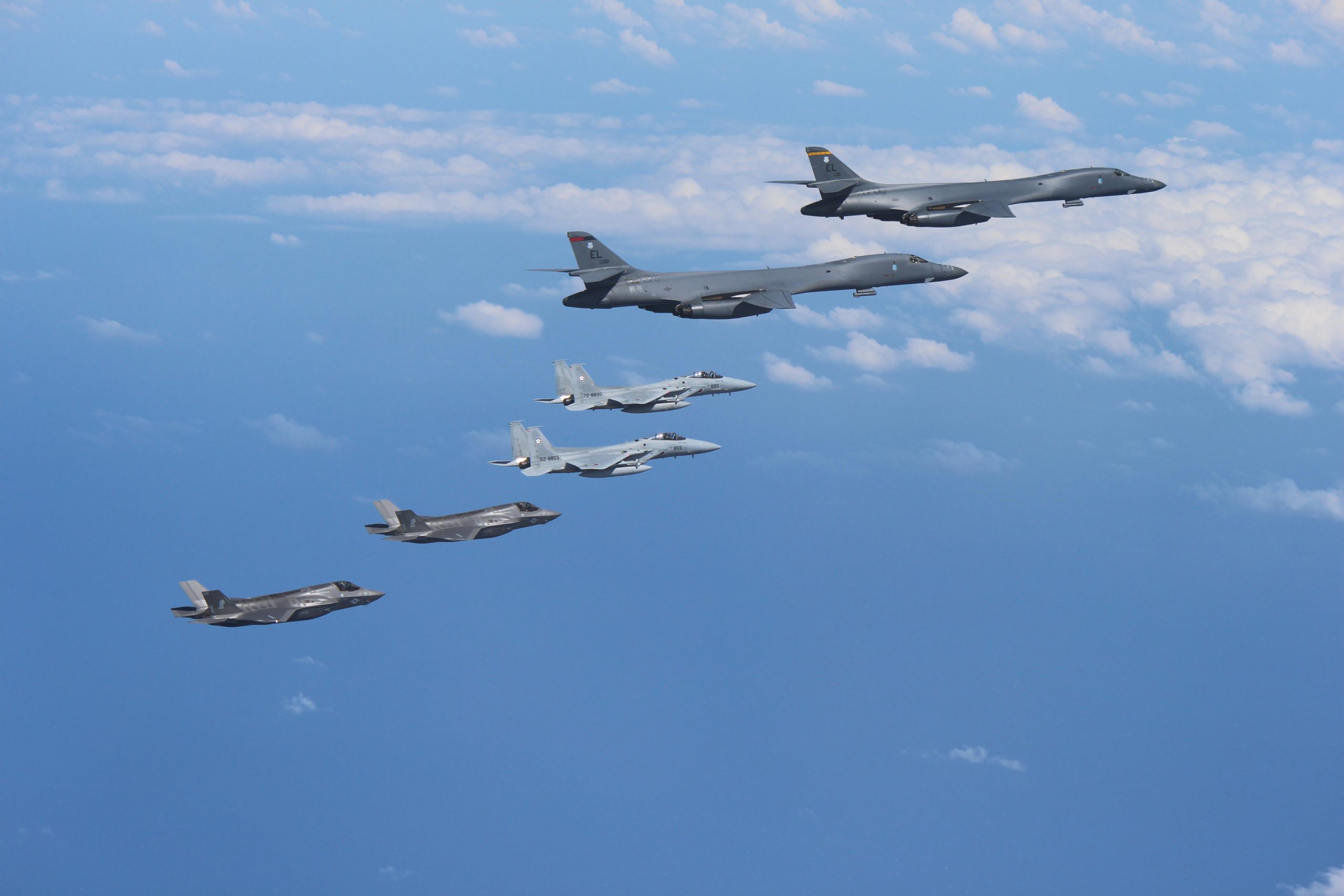The U.S.’ newest and most advanced fighter, the Marine Corps’ F-35B Lightning II, joined U.S. Air Force B-1B Lancer bombers for the first time in a sequenced bilateral mission with Japan and South Korean air forces in Northeast Asia yesterday.
The United States’ newest and most advanced fighter, the Marine Corps’ F-35B Lightning II, joined U.S. Air Force B-1B Lancer bombers for the first time in a sequenced bilateral mission with Japan and South Korean air forces in Northeast Asia yesterday, according to a Pacific Air Forces news release.

Marine Corps F-35B Lightning II stealth fighters fly alongside two Air Force B-1B Lancers
Two B-1Bs from Andersen Air Force Base, Guam; four U.S. Marine F-35Bs from Marine Corps Air Station Iwakuni, Japan; two Japan Air Self-Defense Force Koku Jieitai F-2s; and four South Korean air force F-15Ks executed this mission to emphasize the combined ironclad commitment to the defense of allies and the U.S. homeland. Enhancing combined military readiness through integrated missions ensures national leaders of viable and ready military options.
This mission was conducted in direct response to North Korea’s intermediate-range ballistic missile launch, which flew directly over northern Japan on August 28 amid rising tension over North Korea’s nuclear and ballistic missile development programs.
North Korean Threat
"North Korea's actions are a threat to our allies, partners and homeland, and their destabilizing actions will be met accordingly,” said Air Force Gen. Terrence J. O’Shaughnessy, commander, U.S. Pacific Air Forces, who just returned from an unscheduled visit to Japan to meet with his counterparts.
“This complex mission clearly demonstrates our solidarity with our Allies and underscores the broadening cooperation to defend against this common regional threat,” O’Shaughnessy added. “Our forward-deployed force will be the first to the fight, ready to deliver a lethal response at a moment’s notice if our nation calls."
Over the course of the 10-hour mission, the F-35Bs, B-1B bombers and Koku Jieitai fighters flew together over waters near Kyushu, Japan. The U.S. and South Korean aircraft then flew across the Korean Peninsula and practiced attack capabilities by releasing live weapons at the Pilsung Range training area before returning to their respective home stations.
"The F-35 embodies our commitment to our allies and contributes to the overall security and stability of the Indo-Asia Pacific region," said Marine Corps Lt. Gen. David H. Berger, commander, U.S. Marine Corps Forces Pacific. "By forward basing the F-35, the most advanced aircraft in the world, here in the Pacific, we are enabling the Marine Corps to respond quickly during a crisis in support of Japan, the Republic of Korea, and all our regional partners."
U.S. Pacific Command maintains strategic bomber and fighter capabilities in the Indo-Asia-Pacific theater, retaining the ability to respond to any regional threat at a moment’s notice.
Related Stories
Mattis, Japanese Counterpart Discuss Latest North Korean Missile Launch
Related Links
Special Report: DoD Focus on the Asia-Pacific
Air Force Japan Marine Corps North Korea PACOM South Korea Strategic Deterrence










